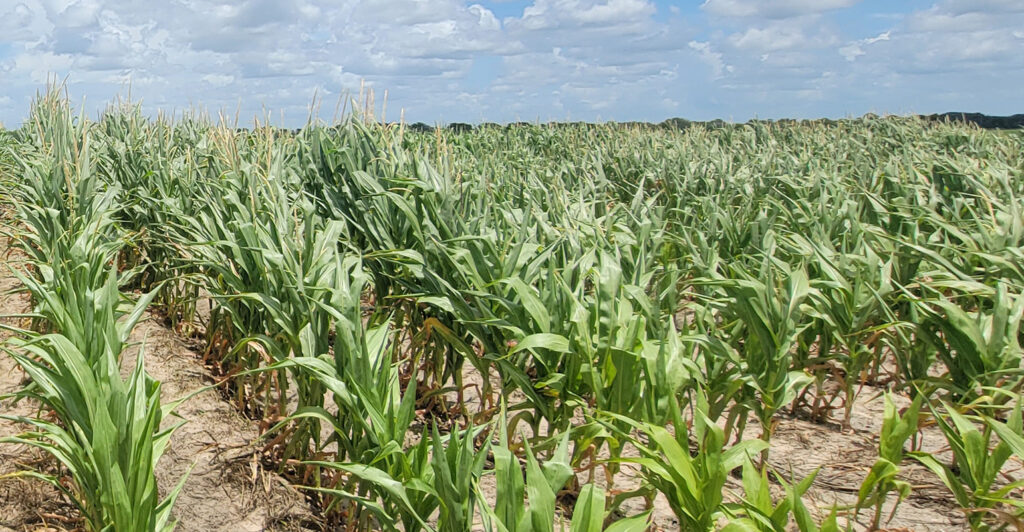Making crop insurance rates more accurate

A new study by agricultural economics experts from Texas A&M AgriLife and Virginia Tech makes a strong case for using historical weather information in crop insurance programs for even more accurate policy pricing.
The study “Incorporating historical weather information in crop insurance rating,” authored by Yong Liu, a Texas A&M AgriLife Research agricultural economist and assistant professor in the Texas A&M Department of Agricultural Economics, Bryan-College Station, was recently published online in the American Journal of Agricultural Economics. It was co-authored by Ford Ramsey, Department of Agricultural and Applied Economics, Virginia Tech.
About crop insurance rates
Crop insurance is the most expensive agricultural policy in the U.S., with over $110 billion in liability in 2020. Agricultural producers and others purchase crop insurance to protect against either the loss of crops due to natural disasters or loss of revenue due to declines in the prices of agricultural commodities.
In the U.S. federal crop insurance program, a key principle in the design of crop insurance policies is that they should be actuarially fair, meaning the expected indemnity under the policy should be equal to the premium.
“Achieving this objective requires accurate pricing of policies, and accurate pricing depends on accurate modeling of all the variables causing losses,” Liu said.
Traditionally, he said, known or fixed historical yield data or historical loss cost data have been used to estimate yields or loss costs.
“For example, soil information is fixed or known at the time the policy is sold,” he said. “Incorporating this type of known information is conceptually similar to dealing with time trends and other fixed determinants of yields or loss costs.”
Liu said loss probabilities and expected losses are then used to calculate premiums. Many rating procedures exclusively use fixed or deterministic variables in determining expected losses.
“But it is widely recognized that a large part of the observed variation in yields and loss costs is due to changes in weather and other variables,” Liu said. “Current loss variables used in determining crop insurance rates can be amended to incorporate other applicable variables like the weather.”
Stochastic variables, like the weather, have a random probability distribution or pattern that may be analyzed statistically but not be precisely predicted. Unlike fixed variables, stochastic variables are unknown when the policy is sold.
“Including these variables, most particularly incorporating long-term weather data, would allow for a more thorough and accurate estimation of the distribution over time,” Liu said.
The case for using historical weather information
Liu noted that in the federal crop insurance program historical weather information is already incorporated to a degree through after-the-event rate adjustments. He also noted that reinsurers frequently use weather information when evaluating crop insurance portfolios and risk.
“Yield distribution that is related to weather has been shown to roughly approximate yield distribution based on observed yields,” he said. “And several previous studies have discussed the potential benefits of using weather or climate information in crop insurance rating.”
He also noted weather data are often available over a greater period than yield data or loss-cost data.
“This is especially the case at the farm level where yield records are notoriously short, in counties where production is sporadic, or for crops with limited historical production,” he said.
Liu said if weather data are useful for making predictive assumptions about yields and loss costs, then incorporating historical weather information in setting crop insurance rates should provide additional accuracy.
“Our approach uses observations where the loss variables are missing,” he said. “Including historical weather data necessarily involves observations with missing dependent variables.”
About the study
In this study, Liu and Ramsey implemented a Bayesian approach for incorporating historical weather information into crop insurance ratings. The Bayesian paradigm has the advantage of reflecting uncertainty from all unknowns instead of only known information.
“We treated the cases of weather information as a stochastic predictor of both crop yields and loss cost ratios,” Liu said. “In the case of yields, we used county-level corn yields from seven states in the Midwest. For loss cost ratios, we used county-level corn and soybean loss cost ratios in Illinois and Iowa for the federal crop insurance program.”
The models were embedded in a Bayesian algorithm that used historical weather information to estimate the required actuarial factors for determining crop insurance premiums, he said.
Liu said that in the case of yields, the study was able to demonstrate the following:
— A private insurer incorporating weather information can develop rates that give them a competitive advantage over crop insurance rates set by the government.
— This advantage is strengthened when there is additional historical weather information. Using more informative data that covers a longer period will improve the overall accuracy.
— This advantage is slightly stronger at lower coverage levels.
He said in the case of loss costs, the study was able to demonstrate:
— Historical weather-related loss cost distributions differ modestly from those without historical information.
— Weather weighting can be incorporated through a streamlined single-step process.
Liu said the study makes two primary contributions to the discussion of crop insurance. The first was implementing a theoretically consistent Bayesian approach for incorporating historical weather data into estimating conditional predictive yield distributions.
“In this, we show that incorporating historical weather information results in economic gains for private insurers by demonstrating the efficacy of the proposed approach,” Liu said.
He said the second contribution was implementing the same approach for loss cost distributions.
“This involves a single algorithm for bounded loss costs, and we find that the historical weather-conditioned distributions differ modestly from empirical distributions based on observed loss costs,” he said.
Liu said the study results have implications for the design of crop insurance programs both in the U.S. and worldwide.
“This study suggests that increasingly large and often disparate data sets can be combined and used to improve agricultural policy,” he said. “As measurement and modeling of weather and crop production continue to evolve, so will crop insurance products and actuarial methodologies.”
He said by developing rates that reflect heterogeneous risk exposure across locations, the methods developed in the study may encourage increased program participation and minimize adverse selection.
This content was originally published here.




Responses